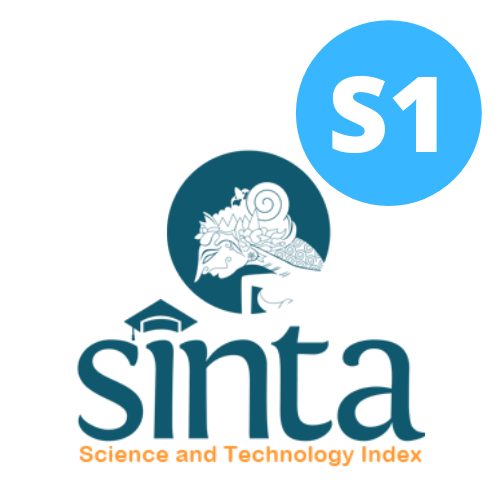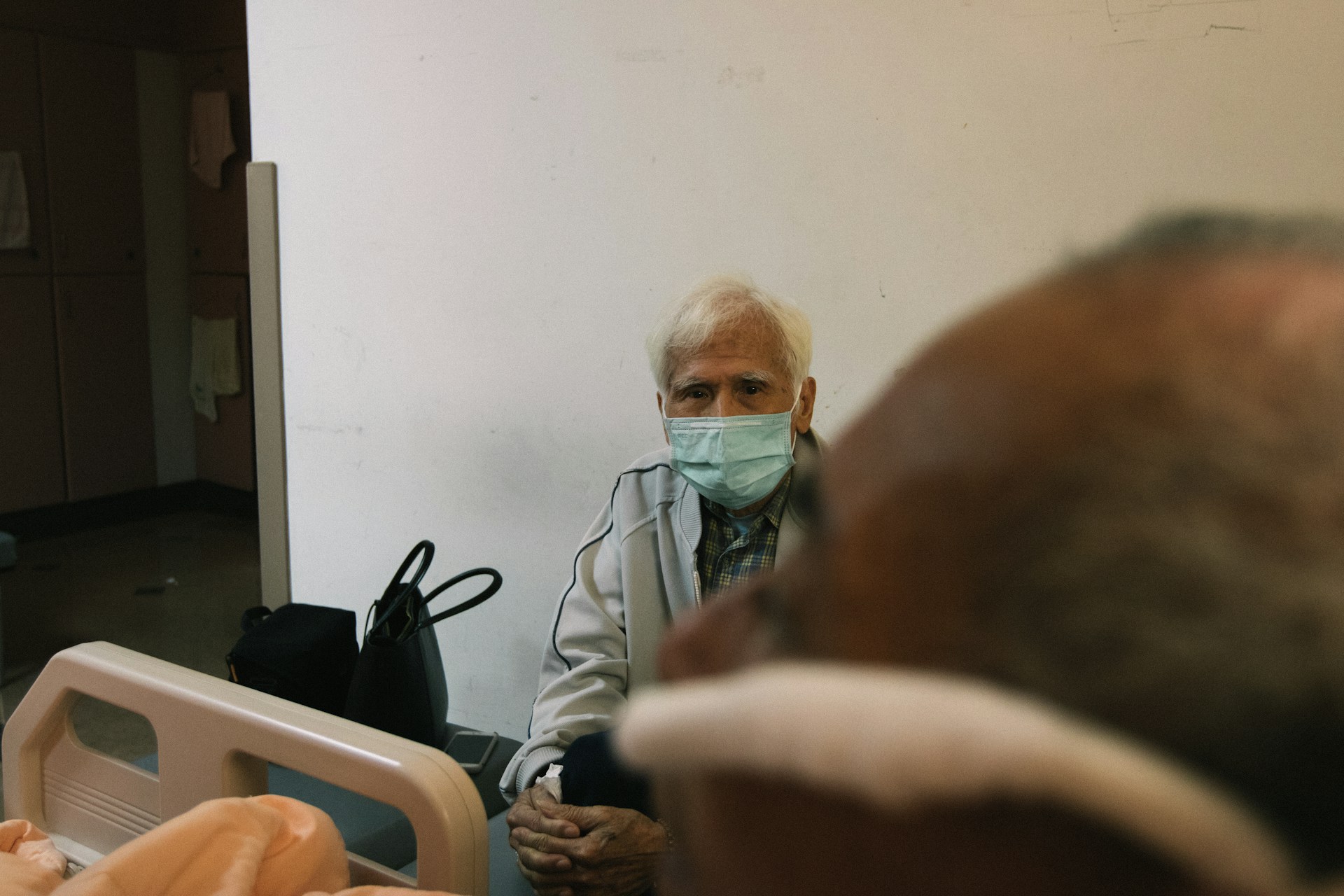The Effect of Mindful Ramadan Fasting Intervention on Dietary Macronutrient, Fiber, Sugar and Physical Activity among Overweight Adolescents Girls
Pengaruh Intervensi Sadar Puasa Ramadan terhadap Asupan Zat Gizi Makro, Serat, Gula dan Aktivitas Fisik diantara Remaja Putri Gizi Lebih
Downloads
Background: The prevalence of overweight among adolescents 13-18 years from 7.1% to 14.1% between 1993 and 2014, respectively. Mindfulness and Ramadan Fasting have gained attention in treatment of overweight.
Objectives: We evaluate the efficacy of Mindful Ramadan Fasting Intervention (MRFI) versus Standard Dietary for Ramadan Fasting (SDRF) in adolescent girls with overweight for improving dietary intake and physical activity
Methods: Forty eight overweight adolescents girls from Public Senior High School (age 15 – 17 years) were randomized to MRFI or SDRF groups. The MRFI was administered in six 60-min sessions nutrition education with mindfulness approach and SDDR was provided in six nutrition education brochure administration. Nutrition education was conducted over two weeks before Ramadan Fasting. Two weeks before and after Ramadan Fasting, dietary macronutrients, fiber and sugar intake were measured by 2x24 hour recall , physical activity was measured by IPAQR and body mass index for age was measured by digital weighing and stadiometer.
Results: The proportion of improvement in nutritional status was 29.1 % in MRFI group and 8.3% in SDRF group. Dietary energy and carbohydrates were significantly decreased among both MRFI and SDDR groups (p-value <0.05). Dietary protein and fiber were significantly decreased in MRFI group (p-value <0.05). Dietary fiber was not significantly decreased among both MRFI and SDDR groups (p-value >0.05). Independent t-test showed that there was no difference of dietary macronutrients, fiber and sugar in both MRFI and SDRF groups (p-value > 0.05). Physical activity was significantly decreased among both MRFI and SDRF groups (p-value < 0.05). However, independent t-test showed there was no difference of physical activity among both MRFI and SDDR groups (p-value > 0.05)
Conclusions: Both MRFI and SDDR intervention showed feasibility to cure overweight among adolescents girls in urban areas. However, MRFI intervention shows greater improvement in nutrition status and energy intake especially carbohydrates.
Wigati, A., Nisak, A, Z. PENTINGNYA EDUKASI GIZI SEIMBANG BAGI KESEHATAN REPRODUKSI REMAJA. J. Abdimas Indones. 4, (2022).
Khoerunisa, D., Istianah, I. HUBUNGAN ASUPAN ZAT GIZI MAKRO DAN AKTIVITAS FISIK DENGAN STATUS GIZI PADA REMAJA. J. Pangan Kesehat. dan Gizi 2, 51–61 (2021).
Proverawati, A. Obesitas dan gangguan perilaku makan pada remaja. (Nuha Medika, 2010).
Riset Kesehatan Dasar. Badan Penelitian dan Pengembangan Kesehatan Kementerian Kesehatan RI Tahun 2013. in (2013).
Andita, N., Asna, A. F. & Noerfitri. Hubungan Tingkat Stres dan Asupan Zat Gizi Makro terhadap Kejadian Kegemukan Remaja Putri SMK di Kota Bekasi. J. Pangan Kesehat. dan Gizi 1, 26–37 (2020).
Oddo, V. M., Maehara, M. & Rah, J. H. Overweight in Indonesia: An observational study of trends and risk factors among adults and children. BMJ Open 9, (2019).
Palilingan, P. Apakah Anak Anda Obesitas?. Betterhealth Tahun II/ Edisi 3/ Triwulan/ September 2010 online. (2010).
Hendrayati, Salmiah & Rauf, S. Pengetahuan Gizi , Pola Makan dan Status Gizi Siswa SMP Negeri 4 Tompobulu. Media Gizi Pangan IX, 33–40 (2010).
Agita, V. V., Widyastuti, N. & Nissa, C. Asupan Energi Cemilan, Durasi dan Kualitas Tidur Pada Remaja Obesitas Dan Non Obesitas. J. Nutr. Coll. 7, 147 (2018).
Loliana, N., Nadhiroh, S, R. ASUPAN DAN KECUKUPAN GIZI ANTARA REMAJA OBESITAS DENGAN NON OBESITAS. Media Gizi Indones. 10, 141–145 (2015).
Suryandari, B, D., Widyastuti, N. HUBUNGAN ASUPAN PROTEIN DENGAN OBESITAS PADA REMAJA. J. Nutr. Coll. 4, 492–498 (2015).
Merdita, I, G, D, J., Agustini, NLP, I, B., Wulansari, N, T. Hubungan Kadar Lemak Tubuh Dengan Ketahanan Kardiovaskuler Pada Mahasiswa Tingkat III Ilmu Keperawatan STIKES Bali. (2018).
Suryaputra, K., Nadhiroh, S, R. Perbedaan Pola Makan Dan Aktivitas Fisik Antara Remaja Obesitas Dengan Non Obesitas. Makara Kesehat. (2012).
Luciana, M., Bjork, J, M., Nagel, B, J., Barch, D, M., Gonzalez, R., Nixon, S, J., Banich, M, T. Adolescent neurocognitive development and impacts of substance use: Overview of the adolescent brain cognitive development (ABCD) baseline neurocognition battery. Natl. Libr. Med. 32, 67–79 (2018).
Dwi, K., Putri, K. & Palupi, K. C. Pengaruh Edukasi Gizi Mindful Eating Semi Online ( MESO ) Terhadap Berat Badan , Asupan Zat Gizi Makro , Mindful Eating Pada Pekerja Dengan Gizi Lebih. 12, 60–67 (2020).
Palupi, K. C., Anggraini, A., Sa'pang, M. & Kuswari, M. Pengaruh Edukasi Gizi "Empire” Terhadap Kualitas Diet Dan Aktivitas Fisik Pada Wanita Dengan Gizi Lebih. J. Nutr. Coll. 11, 62–73 (2022).
Palupi, K. C. et al. Pengaruh edukasi gizi "EMPIRE” terhadap asupan zat gizi makro, serat, dan gula pada wanita dengan gizi lebih. 06, 9–22 (2022).
Dalen, J. et al. Pilot study: Mindful Eating and Living (MEAL): Weight, eating behavior, and psychological outcomes associated with a mindfulness-based intervention for people with obesity. Complement. Ther. Med. 18, 260–264 (2010).
Nelson, J. B. Mindful Eating: The Art of Presence While You Eat. 171–174 (2017).
Adawi, M. et al. Ramadan fasting exerts immunomodulatory effects: Insights from a systematic review. Front. Immunol. 8, (2017).
Harahap, N. FAKTOR PREDISPOSISI STATUS GIZI SISWA TERHADAP PRESTASI BELAJAR SISWA DI SD NEGERI 1 KELURAHAN SITINJAK KECAMATAN ANGKOLA BARAT KABUPATEN TAPANULI SELATAN TAHUN 2018. (INSTITUT KESEHATAN HELVETIA, 2020).
Nikfarjam, M., Noormohammadi, M., Shahrekord, E, M., Vardanjani, S, E., Dehkordi, A, H. The effect of fasting on emotional intelligence in clergies in Shahrekord seminary. J. Shahrekord Univ. Med. Sci. 15, 56–63 (2013).
Muhammad, H. F. L., Latifah, F. N. & Susilowati, R. The yo-yo effect of Ramadan fasting on overweight/obese individuals in Indonesian: A prospective study. Med. J. Nutrition Metab. 11, 127–133 (2018).
Alpansyah., Hashim, A, T. Buku Kuasi Eksperimen: Teori dan Penerapan Dalam Penelitian Desain Pembelajaran. (Guepedia, 2021).
Sugiyono. Metode Penelitian Kuantitatif Kualitatif dan R&B. Alfabeta (2012).
Daradkeh, G. & Sentanu, E. Quantum Ikhlas : Teknologi Aktivasi Kekuatan Hati. (Elex Media Komputindo, 2007).
Kemenkes RI. Riset Kesehatan Dasar (Riskesdas). Jakarta (2018).
Sirajuddin., Surmita., Astuti, T. Bahan Ajar Gizi Survey Konsumsi Pangan. (2018).
International Physical Activity Questionnaire - Short Form. (2002).
Sadeghirad, B., Motaghipisheh, S., Kolahdooz, F., Zahedi, M. J. & Haghdoost, A. A. Islamic fasting and weight loss: A systematic review and meta-analysis. Public Health Nutr. 17, 396–406 (2014).
Daly, P., Pace, T., Berg, J., Menon, U. & Szalacha, L. A. A mindful eating intervention: A theory-guided randomized anti-obesity feasibility study with adolescent Latino females. Complement. Ther. Med. 28, 22–28 (2016).
Zouhal, H. et al. Effects of ramadan intermittent fasting on gut hormones and body composition in males with obesity. Int. J. Environ. Res. Public Health 17, 1–15 (2020).
Allirot, X., Miragall, M., Perdices, I., Baños, R. M., Urdaneta, E., & Cebolla, A. Effects of a brief mindful eating induction on food choices and energy intake: External eating and mindfulness state as moderators. Am. Psychol. Assoc. 9, 750–760 (2018).
Waluyo, A. REVIEW OF THE INFLUENCE OF MINDFUL EATING ON WEIGHT GAINS AND POOR FOOD CHOICES DUE TO PSYCHOLOGICAL DISTRESS IN ADOLESCENTS AND ADULTS. (Universitas Katolik Soegijapranata, 2022).
Boaz, M. & Leibovitz, E. Functional foods for weight management: Dietary fiber - A systematic review. 3, 94–102 (2013).
Thasim, S., Syam, A. & Najamuddin, U. PENGARUH EDUKASI GIZI TERHADAP PERUBAHAN PENGETAHUAN DAN ASUPAN ZAT GIZI PADA ANAK GIZI LEBIH DI SDN SUDIRMAN I MAKASSAR TAHUN 2013 THE EFFECT OF NUTRITION EDUCATION TO CHANGE KNOWLEDGE AND NUTRIENT INTAKE IN OVERWEIGHT CHILDREN AT SDN SUDIRMAN Program St. Univ. Hasanuddin 1–14 (2013).
Mason, A, E., Epel, S, E., Kristeller, J., Moran, P, J., Dallman, M., Lustig, R, H., Acree, M., Bacchetti, P., Laraia, B, A., Hecht, F, M., Daubenmier, J. Effects of a mindfulness-based intervention on mindful eating, sweets consumption, and fasting glucose levels in obese adults: data from the SHINE randomized controlled trial. J Behav Med 39, 201–213 (2016).
Luwito, J. & Santoso, A. H. Hubungan Asupan Gula Dalam Minuman Terhadap Obesitas Pada Anak Remaja Usia 15 – 19 Tahun di Sekolah SMA Notre Dame Jakarta Barat. J. Muara Med. dan Psikol. Klin. 1, 161 (2022).
Betaditya, D., Citra A, F., Ratna R, G., Puri S, Y., Mangestika W, R., Nabila, N., Listyawardhani, Y., Nugroho, A. GambaranPolaMakanSebelumdanSesudahPuasaRamadhanpadaMahasiswaOverweightdiUniversitasJenderalSoedirman. J. Gizi dan Kel. 1, (2022).
Laverack, G. The Challenge of Behaviour Change and Health Promotion. Unit Heal. Promot. Res. Univ. South. Denmark 8, (2017).
Rahayu, S., Mulyani, S. & Perdana, M. Pengaruh Pendidikan Kesehatan Audiovisual terhadap Tingkat Aktivitas Fisik pada Populasi Berisiko Sindrom Metabolik di Wilayah Kerja Puskesmas Turi Effect of Audiovisual Health Education toward Physical Activity Level on Metabolic Syndrome Risk-Population. J. Keperawatan Klin. dan Komunitas 2, 105–113 (2018).
Pramono, A. & Sulchan, M. Kontribusi Makanan Jajan Dan Aktivitas Fisik Terhadap Kejadian Obesitas Pada Remaja Di Kota Semarang. Gizi Indones. 37, 129 (2014).
Jaelani, M., Larasati, M, D., Rahmawati, A, Y., Ambarwati, R. Efektifitas Aktivitas Peer Group terhadap Penurunan Berat Badan dan Persen Lemak Tubuh pada Remaja Overweight. J. Kedokt. Brawijaya 30, (2018).
Copyright (c) 2022 Amerta Nutrition

This work is licensed under a Creative Commons Attribution-ShareAlike 4.0 International License.
AMERTA NUTR by Unair is licensed under a Creative Commons Attribution-ShareAlike 4.0 International License.
1. The journal allows the author to hold the copyright of the article without restrictions.
2. The journal allows the author(s) to retain publishing rights without restrictions
3. The legal formal aspect of journal publication accessibility refers to Creative Commons Attribution Share-Alike (CC BY-SA).
4. The Creative Commons Attribution Share-Alike (CC BY-SA) license allows re-distribution and re-use of a licensed work on the conditions that the creator is appropriately credited and that any derivative work is made available under "the same, similar or a compatible license”. Other than the conditions mentioned above, the editorial board is not responsible for copyright violation.












































